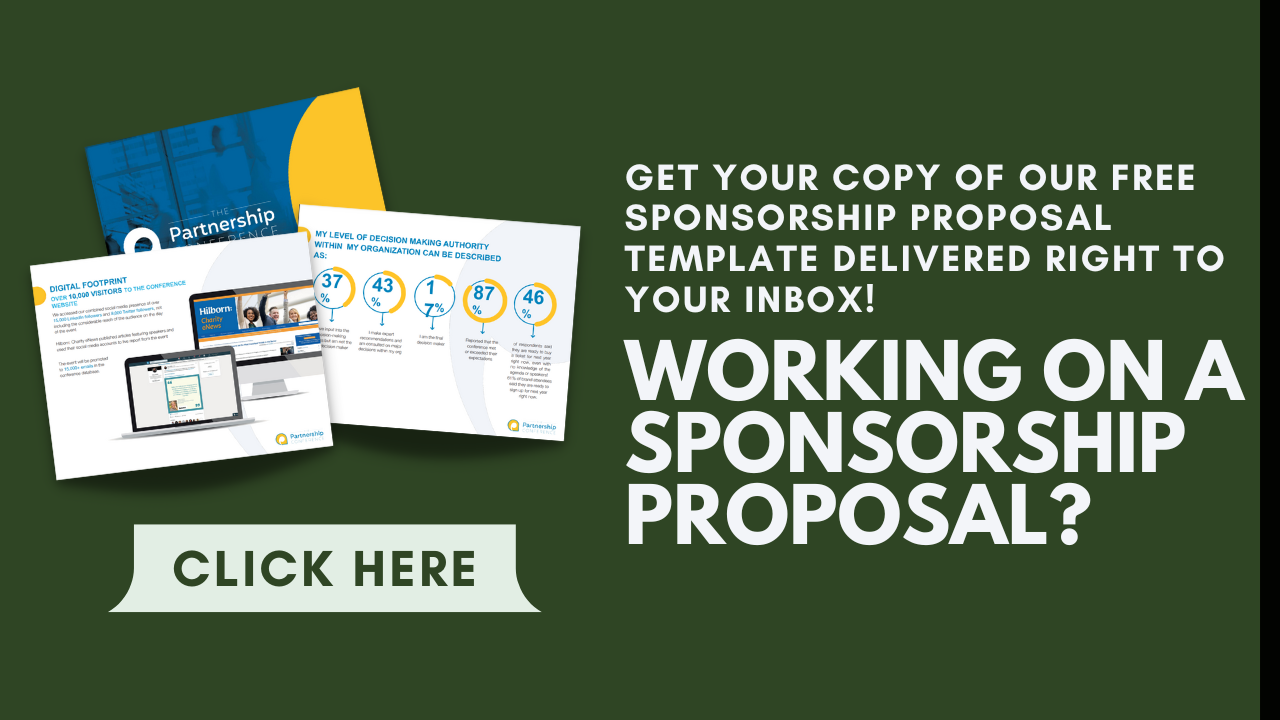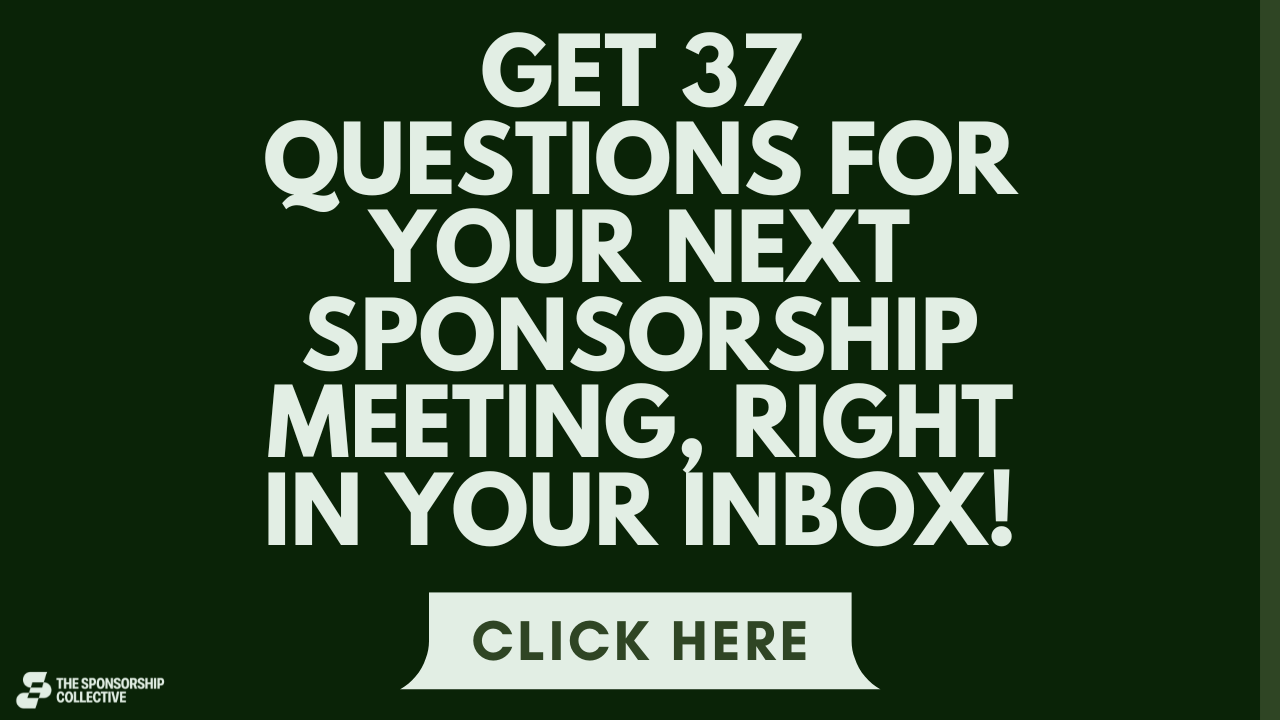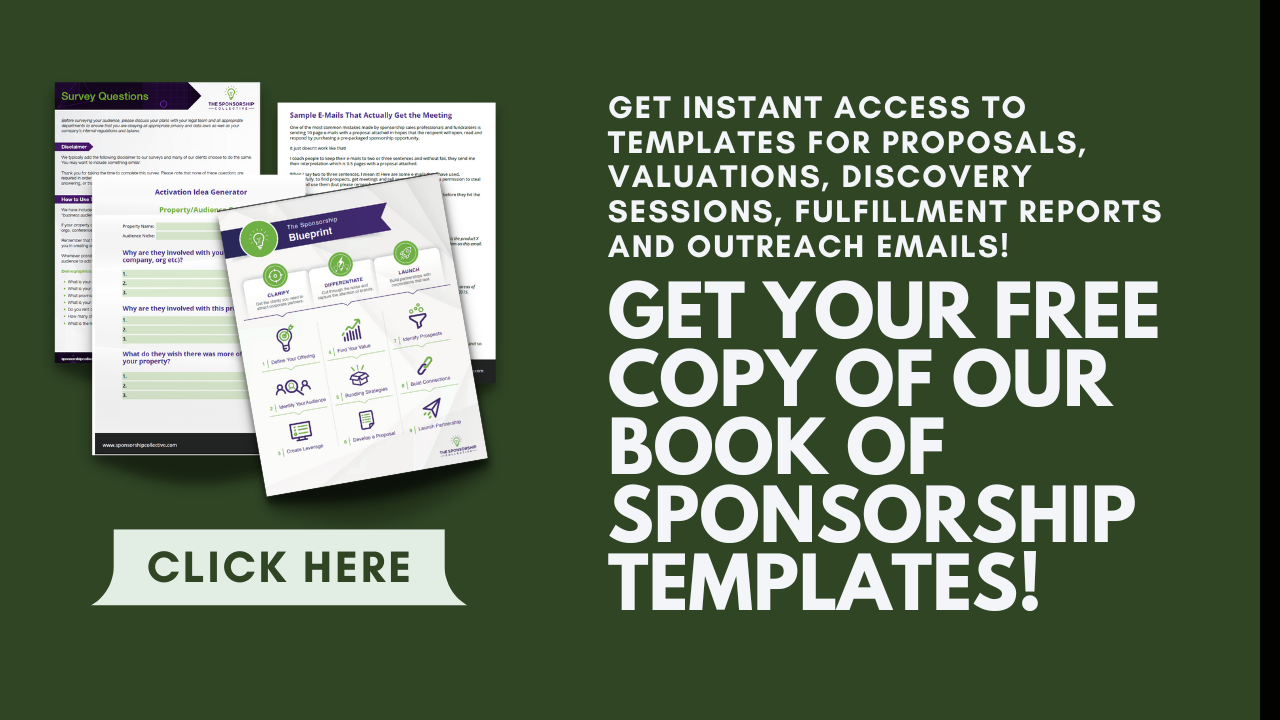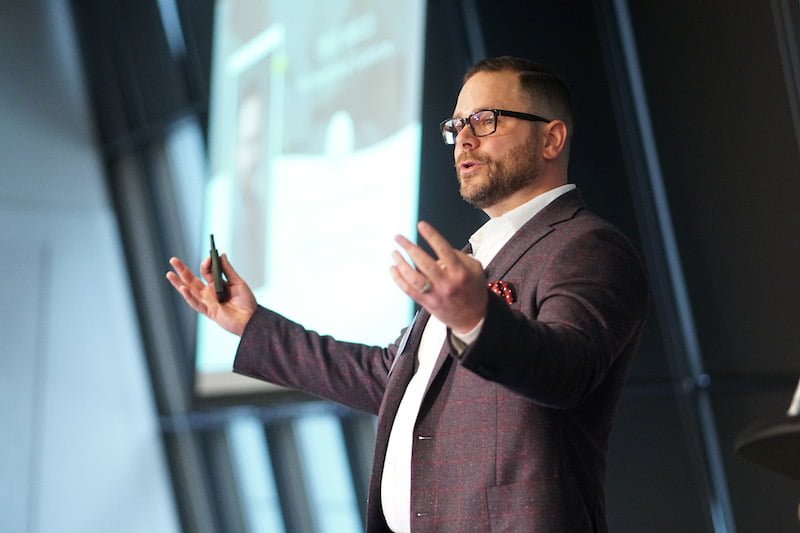Before you dive in, if you are interested in influencer sponsorship, check out these titles in our “sponsorship for podcasters and influencers” series:
- Resource Page for Podcast and Influencer Sponsorship
- The Complete Guide to Podcast Sponsorship
- Maximizing Sponsorship Opportunities for Your Podcast
- 5 Things Podcast Sponsors Wish You Knew
- How Much Should You Charge for Podcast Sponsorship
Haven’t you heard? It’s all about the micro-influencer as the 2020s get underway. These ultra-popular parties have a lot of clout on social media, making them even more covetable as sponsorship partners than traditional influencers.
If you’re a small brand or organization, working with a micro-influencer can put you on the map. So, how do you get started, securing sponsorship deals with these ultra-influential people? I’ve got the answers, so join me for expert insights to take your sponsorship goals further.
What Is a Micro-Influencer, Anyway?
You’re likely familiar with influencer marketing, but what in the world is a micro-influencer?
Although the name might make you think these people have fewer followers than your standard influencer, that’s not the case. They have more!
A micro-influencer is a social media king or queen, having anywhere from 10,000 to 100,000 followers. They’re bigger than nano-influencers, who have 1,000 to 10,000 followers, but smaller than macro influencers (100,000 to 1 million followers). They also don’t have the same level of pull as a celebrity, who often rakes in followers by the millions.
Although their reach isn’t the furthest an influencer can go, many businesses find that micro-influencers have just the audience impact they need. You’ll see in the next section how many brands have clambered to work with micro-influencers. Spoiler, it’s a lot!
As social media marketing has become more prevalent, people have cracked the code to increase their follower count, meaning micro-influencers are on the rise. The number of required followers isn’t so excessive that most people can’t reach this echelon, opening up more sponsorship opportunities left and right.
What Kinds of Companies Work with Micro-Influencers?
As promised, let’s look at some major brands that have chosen micro-influencers to further their marketing goals:
- Nivea
- Forever 21
- La Croix
- Canon
- ASOS
- Audible
- Coca-Cola
- Gillette
- HelloFresh
- Glossier
- Sperry
- Target
- Dunkin
- Adidas
- Starbucks
- Airbnb
- Nike
- Sephora
I told you it was an exhaustive list. Next, let’s take a look at some examples of successful micro-influencer sponsorships from the list above so you can see them in action.
Coca-Cola is perpetually involved in sponsorships, although the soft drink brand mostly favors sports sponsorship. It’s always exploring trendy sponsorship areas, which is why it’s unsurprising it’s slipped into the micro-influencing niche.
Coke worked with more than a dozen content creators and micro-influencers. Interestingly, the follower count for some of them was under 100,000, while most others had 100,000 or more followers.
The sponsorship opportunity saw names like Alex Decunha and Miette Dierckx casually drop references to drinking Coke. The soda giant chose influencers from many industries, from fashion to sports and travel. Since many of the micro-influencers are European, this campaign allowed Coke to reach Europe, an untapped market for the brand.
Here’s another example. Airbnb regularly works with Superhost Ambassadors who get to try out new features first. More so, they have access to better support than the average Airbnb host and get money for host referrals.
How to Work with Micro-Influencers in a Sponsorship Capacity: Tips and Strategies
Micro-influencers have already made their mark on the sponsorship industry, and I suspect that will only increase with time. Whether for now or a later campaign, you’ll want to check out these tactics for partnering with a micro-influencer.
Know Your Audience
Micro-influencers have extremely specific audiences they appeal to. You won’t stand a chance of getting an influencer to agree to work with you if you don’t have the same.
Niched audience data will benefit you no matter your industry, whether you’re involved in events, festivals, motorsports, or even not-for-profits. While your “audience” will vary between customers, donors, and attendees, you still need to learn as much as possible about them.
This usually calls for an audience survey. Issuing a short but insightful questionnaire to your audience where you ask about the kinds of brands they use and events they attend will provide the detailed data you need before you approach a micro-influencer.
How do you get anyone to respond to your survey? You must incentivize them with giveaway entries or discount codes.
You won’t get 100 percent of your audience to respond, but even if 25 percent gets back to you, that’s still enough to get an idea of what your audience is interested in, what their challenges are, how much money they’re making, what kinds of industries they work in, and what events they’ll attend.
Use this data to filter your audience into small groups. Break down the segments until you have 25+ data points on each, then you can consider them niched down enough to appeal to a micro-influencer.
Find Prospects
The prospecting process for micro-influencers looks a little different than how you might usually do it. You can ask your audience which influencers they follow and add any recurring names to the shortlist.
I also recommend tapping into your network. They might know about an influencer not on your radar who would be perfect for your sponsorship opportunity.
Don’t just take their word for it, though. Do your own digging. Review what kinds of brands the micro-influencer works with. Watch or read some of their content to gauge the kinds of interaction and engagement they get.
Oh, and give them a follow. You might as well. This will help you see how frequently they post and roughly what times.
I also recommend engaging with them while you can. Comment here and there and like posts. Try to at least get on their radar, even if you don’t yet get an opportunity to build a rapport.
Brainstorm Activations
Once you get a feel for what the micro-influencer posts about, it’s time to begin planning activations. These don’t look like the kinds of services you offer at festivals or sporting events, such as booths.
Instead, the entirety of your activations will be centered around social media. Here are some micro-influencer sponsorship activation ideas to help your brainstorming session:
- Product placement
- Unboxing video
- Livestream where they test your product or service
- Social media posts
- Contests
- Giveaways
- Brand ambassadorship
- Collaborative content
- Affiliate marketing
- Account takeovers
- Sponsored posts
- Interviews
- Sponsored Q&As
The right activation for one micro-influencer might not be ideal for another, which is why you should get to know them through their social feed, then determine what kinds of services you can provide them.
Connect with the Influencer and Pitch
You’ve done enough legwork; now it’s time to reach out.
Usually, I advocate for finding a connection within a sponsor company and calling them, but that doesn’t work here. You can connect directly with the micro-influencer via social media DM or email.
Keep in mind that if the influencer doesn’t follow you, your DM will not land directly in their inbox. Most social platforms have a side folder where messages from non-followers go. You’d have to hope the influencer checks that folder now and again, even just to clear it out, or they won’t see your message.
So, what in the world are you supposed to say? This isn’t a traditional sales pitch, so try this template on for size.
Hi [influencer name],
I hope you’re doing fantastic. I’m [name], and [describe who you are a bit professionally]. My brand [explain what your company or organization does briefly].
I’ve followed your content for a while, and I think our values and interests align well. I feel like your audience would like our . Would you like to collaborate on a YouTube video where you unbox and try our products?
What are your thoughts on this opportunity? I’d love to hear them when you have a minute. Thanks for your time!
Sincerely,
[Your name]
Here are more pointers on how to contact an influencer:
- Don’t focus the bulk of the message on who you are and what you do. Instead, dedicate most of your words to why working together would benefit both parties.
- Keep your message short. Influencers only have so much time, so don’t waste it.
- Be direct. Beating around the bush never works in sponsorship. If you want to work together, ask for the opportunity. The worst that can happen is you hear nothing back, or they say no.
- Include a link to your media kit and your socials so the influencer can learn more about you without having to search.
- Incorporate some of your personality into your message, rephrasing and readjusting the template above to suit you. You know yourself and your business best!
- Don’t send attachments, especially if emailing an influencer. Attachments can get your message marked as spam and look suspicious.
Follow Up
In a perfect world, the micro-influencer would respond to you in a matter of hours, or at least days. However, that’s rarely how it works. The influencer has their own set of responsibilities, plus all the other sponsorship requests they’re considering or fending off.
If a week has passed and you haven’t heard anything, you can send a follow-up. Use the same platform you chose to reach out initially, whether social media or email.
You should keep your follow-up message even shorter than the initial correspondence. Reintroduce yourself, briefly mention what you do, and state that you reached out the other day (state the date).
Mention the offer you had proposed, and ask if they’re still interested in it. Present your contact information, then sign off.
If another week goes by and you still haven’t heard anything, you can reach out once more, but at that point, it’s unlikely you’ll get a response at all.
Hammer Out Details
If the influencer responds and is interested in your opportunity, you will first talk it over with them. Through subsequent conversations or meetings, you’ll begin determining the terms of your agreement.
That will involve drawing up a contract between both parties, which you should always have a lawyer review.
Discuss Recurring Partnership
After delivering your superb services, you might be interested in extending your working relationship with the micro-influencer. If they got benefits out of the partnership, they should be amenable to that as well.
Extending your working relationship calls for creating new assets and activations or upgrading what you already offer to make it more valuable for the influencer.
The Benefits of Teaming with a Micro-Influencer
Although seeking a micro-influencer in a sponsorship capacity requires just as much work as partnering with a traditional company, the results speak for themselves. Here’s what you can expect by teaming with a micro-influencer.
More Attainable
Influencers of all levels get sponsorship and partnership requests almost daily. but it’s the influencers with the most followers that are absolutely inundated. A micro-influencer still has a full plate, but they don’t have quite the same demand as macro-influencers or celebrities, so they’re attainable.
You still need to do all the legwork I outlined in the steps above, but you’re likelier to get a response when you contact a micro-influencer, especially if there’s an immediate intersection between your audience and theirs.
Niche Audience
You know what I always say, the riches are in the niches! Promoting your products and services toward a small, engaged audience with a need for your goods is always better than advertising to anyone and everyone.
The concentrated audience a micro-influencer has access to means more qualified leads entering your sales funnel who are readier to convert.
High Follower Count
You can think of micro-influencers like the ideal bowl of porridge in Goldilocks: just right. They have a good number of followers; not too low that you won’t reap any benefit by working together, and not so high that they blow you out of the stratosphere.
More Affordable
Another advantage of selecting micro-influencers to work with is their reasonable pricing. Influencer Marketing Hub states that influencers at this level charge:
- $250 to $1,250 per Facebook post
- $20 to $100 per Twitter tweet
- $25 to $125 per TikTok video
- $200 to $1,000 per YouTube video
- $100 to $500 per Instagram post
Those prices are reasonable if your company is on a tight budget yet still seeking a micro-influencer.
You’ll certainly find the prices more agreeable than teaming with a macro-influencer. Their prices are far more inflated, with a going rate of $10,000 or higher per post. You might reach audience members in the millions, but it comes at a steep cost.
Micro-influencers have a marginally lower reach and matching prices to boot.
Great Engagement Levels
When a micro-influencer speaks, people listen. Their ultra-targeted, highly curated audience will read, share, like, and comment on content they post. They’ll try the products and services they recommend.
Part of what makes engagement levels high with a micro-influencer is the intimacy of the relationship between them and their audience. It’s just them and the viewer, or it feels like it, at least. This level of one-on-one connection can make the micro-influencer seem akin to a friend.
Sure, the influencer is subtly selling their audience a product or service, but it doesn’t feel the same as when you try to do it. There is no sales or marketing language and no hidden, underlying message.
It comes across more that the influencer found this epic brand they love and want to share it with their audience. Their intention is to help their audience find great products and services.
Better Than Celebrity Endorsements (At Least for Now)
Are you shocked to read that? I can understand it, but it’s true. Celebrity influencers have become so embedded in the market that people are desensitized. They see these celebrity-brand partnerships for what they are: a celeb with a fat paycheck trying to sell you on something they probably don’t personally use themselves.
Influencer partnerships feel more authentic, driving more conversions and sales. Companies like working with influencers over celebrities because they cost a lot less!
Wrapping Up
Micro-influencers are making their mark in sponsorship. They’re more accessible than macro-influencers and celebrities yet deliver many of the same benefits, such as a curated audience willing to buy products/services they recommend.
Reaching out to a micro-influencer is the most daunting part. Remember to do your audience research and create tailored assets and activations before you get in touch. Follow up if needed, and personalize your approach to stand out from the many others vying for the influencer’s attention.
If you need more advice on connecting with micro-influencers, schedule a call with the Sponsorship Collective today.
- About the Author
- Latest Posts
Chris Baylis is the Founder and Editor-in-Chief of The Sponsorship Collective.
After spending several years in the field as a sponsorship professional and consultant, Chris now spends his time working with clients to help them understand their audiences, build activations that sponsors want, apply market values to their assets and build strategies that drive sales.
Read More about Chris Baylis




